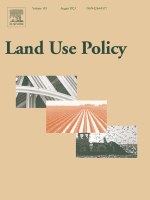The impact of Peru’s land reform on national agricultural productivity: A synthetic control study
| Year | : | 2025 |
|---|---|---|
| Author/s | : | Mauricio Espinoza, Javier Escobal |
| Area/s | : | Rural development and agriculture |
Espinoza, M., & Escobal, J. (2025). The impact of Peru’s land reform on national agricultural productivity: A synthetic control study. Land Use Policy, 157, 107619. https://doi.org/10.1016/j.landusepol.2025.107619
This paper evaluates the impact of Peru’s collectivist land reform in 1970 on national agricultural productivity. While prior research have shown contrasting impacts of land reform across different settings, few have assessed the productivity consequences of collectivist experiments at the aggregate level. Employing a Synthetic Control Method, we construct a scenario of Peru’s productivity trends in the absence of land reform, drawing on data from comparable Latin American countries unaffected by the reform. We estimate the reform’s effect by comparing actual productivity series with the counterfactual scenario. Our findings reveal a substantial negative impact, with agricultural productivity remaining about 20 % below the synthetic control between 1969 and 1985. Robustness analyses support the causal interpretation of these effects, as our findings remain consistent across various optimization methods, falsification tests, and alternative donor pools. Importantly, we confirm that our results are not attributable to broader economic trends affecting Peru during the land reform period, as similar impacts were not observed in unaffected sectors. A decomposition analysis attributes the reform’s impact to decreases in the overall efficiency of farm production. The shift from individual large landowners to farmer collectives, combined with constraints imposed by an extractive macroeconomic environment, likely disrupted the optimal allocation of resources and technological decision-making within cooperatives, ultimately weakening agricultural Total Factor Productivity.







